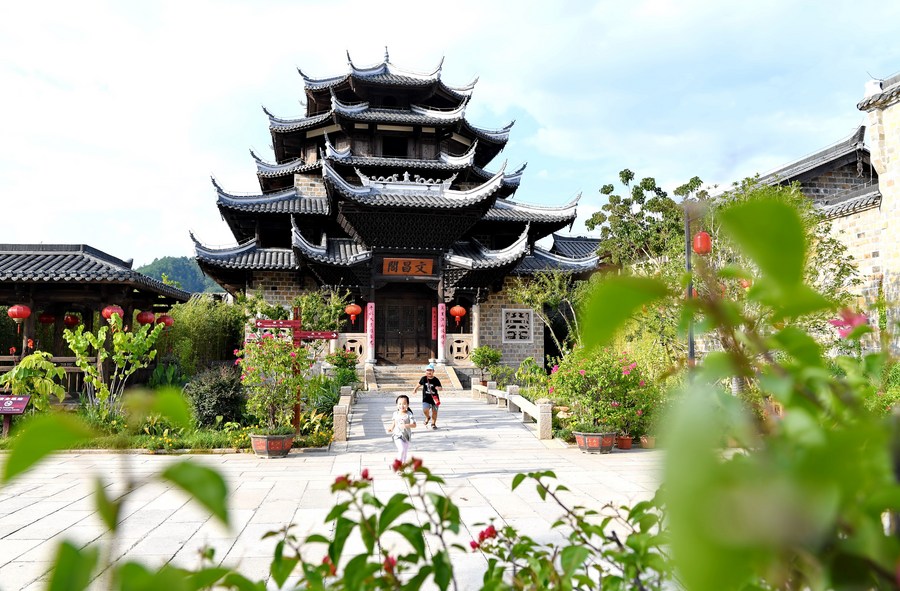GUIYANG/FUZHOU, Aug. 14 (Xinhua) -- Strolling by the Wuma River in southwest China's Guizhou Province, Li Xianfang could not hide his excitement.
"What amazing changes have taken place here!" said Li, head of the Wuma Township, as he gazed at the pastoral landscape composed of verdant mountains, glimmering water, white walls and tiled roofs.
Just a few years back, this town was on the brink of an environmental disaster, packed with small paper mills, coal plants and other factories, which were constantly polluting the atmosphere and the Wuma River, a major tributary of the Chishui River that flows through Guizhou.
Today, the factories have been replaced by sorghum fields and orchards, and the stinky industrial town has been turned into an eco-tourism destination.
The transformation of Wuma Township is just one of many stories from the shift to an eco-friendly development model in Guizhou, a pilot zone of national ecological civilization, as the country continues the promotion of ecological progress.
The national shift is one of the major aspects of building a moderately prosperous society, and involves a slew of policies and concrete moves, such as a ban on logging in natural forests and massive efforts at pollution control.
At the state-owned Huadehe forest farm in the city of Liupanshui, Guizhou, the economy has shifted from one based on lumber to forest-based, after the farm began to implement a logging ban several years ago.
"We were increasingly aware that if we exploited the ecological environment too much, we would pay a heavier price in the future, so we stopped logging and shifted to conserving forests and developed the forest economy," said Wang Xi, head of the forest farm.
Farmers received guidance in planting edible fungi, flowers and medicinal herbs as new sources of income.
"Good protection of forests is a source of fortune," said Chen Taihong, chairman of an agricultural company involved in edible fungi cultivation at the farm.
"The transition to preserving forests is a path to the harmonious co-existence of man and nature," he added.
China's forest coverage rose from 12.7 percent in the early 1970s to over 23 percent in 2020. In the past decade, China's forest area has seen an average annual increase of 2.5 million hectares, ranking top in the world.
Large-scale afforestation has boosted forest-related industries and helped raise the income of farmers.

Children play near the Wenchang Pavilion in Tingzhou Town of Changting County, east China's Fujian Province, Aug. 20, 2020. Changting County has been maintained in accordance with its ancient appearance to best demonstrate its history and culture. (Xinhua/Lin Shanchuan)
Changting County in east China's Fujian Province, which used to suffer from serious soil erosion, is now lush and green, and filled with the aroma of fruits every autumn.
By the end of 2020, forests had covered 80.31 percent of the county and the area of soil erosion had been reduced to nearly one fifth of the figure in the mid-1980s, thanks to ongoing remediation and ecological restoration project.
Based on the forest resources, the county has seen a booming forest economy, including raising chickens and growing Chinese medicinal herbs, which has helped many locals escape poverty.
By 2020, some 21,000 households in Changting had become involved in forest-economy industries.
"We have turned the effect of soil-erosion control into a real ecological dividend for our people," said Liao Shenhong, Party chief of the county.






